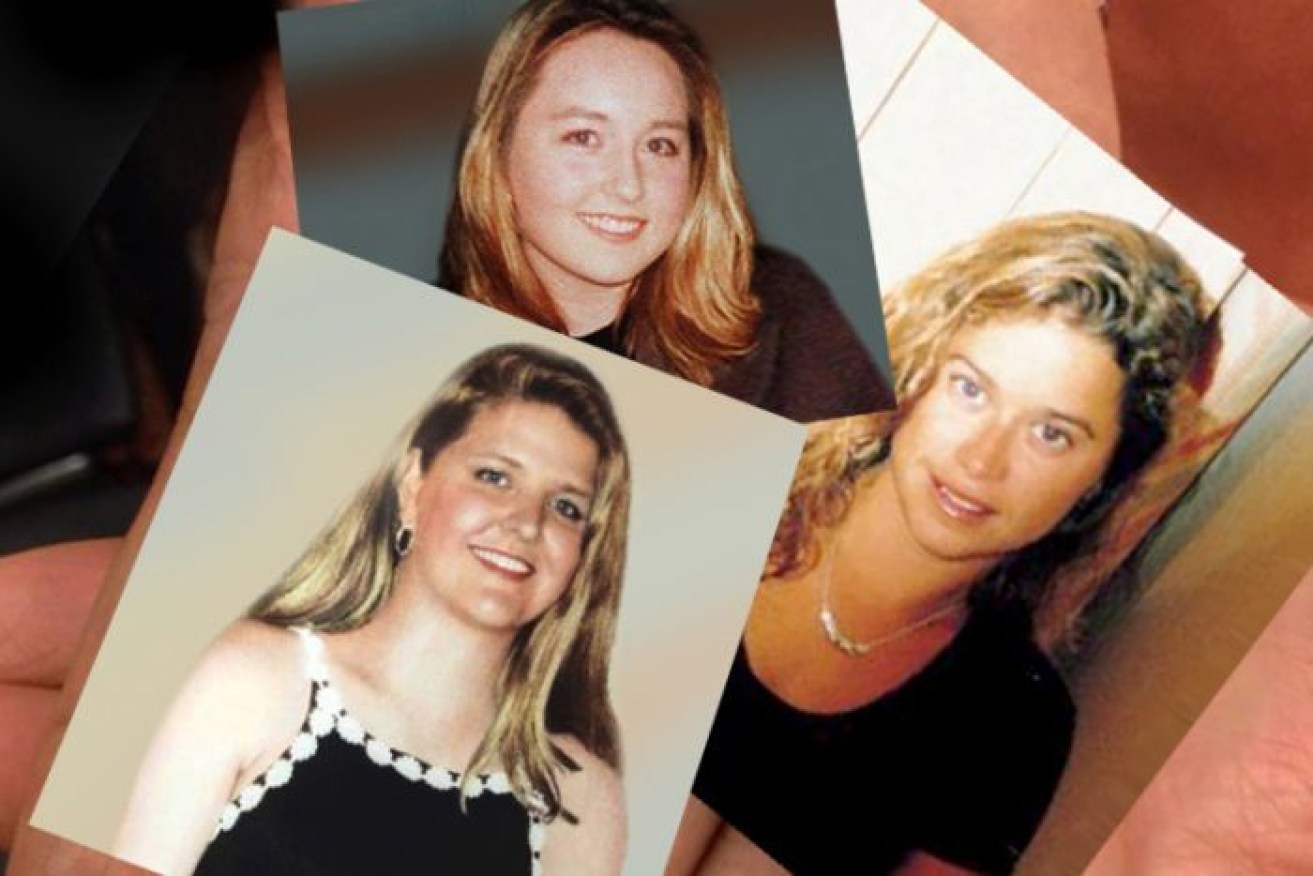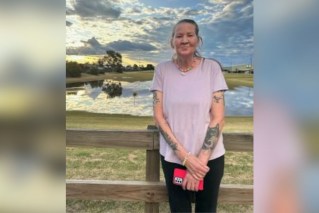Claremont killings: Inside the science that led police to Bradley Robert Edwards

Jane Rimmer, Sarah Spiers and Ciara Glennon were last seen on the streets of Claremont. Photo: ABC
Former telco worker Bradley Robert Edwards stands trial for the Claremont serial killings, but it’s the methods of DNA scientists that are coming under scrutiny in Perth’s Supreme Court.
It was the DNA of an “unknown male” found on a murder victim’s body that led police to arrest Edwards in 2016.
How that DNA got there is now the focus of the trial, which has so far heard the testimony of 170 witnesses and is expected to last another four months.
The Claremont serial killings shook the community of Perth between 1996 and 1997.
Secretary Sarah Spiers, 18, childcare worker Jane Rimmer, 23, and lawyer Ciara Glennon, 27, all disappeared after a night out in affluent Claremont.

An Identikit image, tendered as evidence, of a man seen in a Telstra vehicle in Claremont on January 27, 1996 – the night Sarah Spiers vanished. Photo: AAP
Ms Rimmer’s and Ms Glennon’s bodies were found in bushland weeks after their respective disappearances, with cuts to their throats and defensive wounds on their arms.
Investigators found no evidence of sexual assault.
Ms Spiers’ body has never been found.
Here, The New Daily explains how the DNA was obtained in Australia’s longest running and most expensive investigation, and why that evidence has become a focal point in a trial that continues to grip Perth.
DNA breakthrough
Twelve years into the Claremont investigation, WA Police made a breakthrough with the discovery of male DNA in debris under Ms Glennon’s fingernails.
The DNA was discovered in 2008 by scientists in a specialised London lab, which used an advanced method called Low Copy Number analysis (LCN) not available in Perth at the time.
The sample was marked as “Unknown male 4”.
“We don’t have the sensitivity to detect just a single copy of DNA, so we ‘photocopy’ it up in a process called PCR [Polymerase Chain Reaction],” explained Perth forensic scientist and former crime scene investigator Brendan Chapman.
“It’s like boosting the signal. We do that copying process around 28 times in a normal test. With LCN we repeat that process up to as many as 35 times.”

Forensic scientist Brendan Chapman.
It was through that amplification that a DNA profile was gleaned.
And in a stunning twist, the sample matched DNA found from intimate swabs taken from a teenager who was abducted in a Claremont park and brutally raped at Perth’s Karrakatta Cemetery in 1995 – the year before the murders began.
“The DNA is packaged up in cells and in one cell is the entire genome – over three billion pieces of DNA sequence,” Mr Chapman said.
“Most of the DNA is identical to any other person’s DNA. So we look at 21 short regions in today’s testing.
“Those areas are chosen because they differ hugely between every person on the planet.”
Hunting the ‘unknown male’
Now armed with the DNA of a suspect, police looked at cold cases to determine if the killer might have committed prior offences.
In one cold case from 1988, an 18-year-old woman had been attacked in bed at her family home at Huntingdale, in Perth’s south-east.
The woman, who was not sexually assaulted, screamed for her dad and the intruder fled, leaving behind a kimono, which he had taken from a clothes line.

An image tendered as evidence shows marks on the ground where a 17-year-old girl was dragged through Karrakatta Cemetery in 1995 and twice raped by accused serial killer Bradley Edwards, who admitted to the attack. Photo: AAP
Semen was found on the garment, which yielded the same “unknown male” DNA.
Though the case was 32 years old, the DNA was preserved.
“DNA is packaged in the cell, and when a sample is kept dry and in the dark it can maintain for decades,” said Mr Chapman, a senior lecturer in forensic science at Perth’s Murdoch University.
“That’s why you see forensic officers walking out from crime scenes with brown paper bags. If there is any moisture, the bag allows it to breathe.”
In the end, however, it was a simpler science that finally gave police a name.
At the time of the Huntingdale attack there had been other reports of a prowler, and in one case they found fingerprints at a home.
Police ran the cold case prints through a database and finally got a match: allegedly, they were that of Bradley Robert Edwards.
His fingerprints were on file because he had been convicted of a common assault against a woman in 1990.
Going undercover
What followed was an undercover operation to get Edwards’ DNA.
When he went to the movies, he discarded an empty Sprite bottle outside the theatre, and police swooped in and retrieved it from the bin.
DNA was extracted and allegedly matched the DNA of the “unknown male”. Edwards was arrested.
In a stunning twist before the trial last year, Edwards pleaded guilty to the rape and home attack, but pleaded not guilty to the murders.

A sketch of confessed rapist Bradley Robert Edwards in the early days of the trial in the Supreme Court of Western Australia in November. Photo: AAP
DNA contamination?
Edwards’ defence team argues that the debris taken from Ms Glennon’s fingernails was affected by cross-contamination in the lab during the investigation process (Edwards’ DNA had been in the lab since the rape in 1995).
Edwards’ lawyer Paul Yovich has grilled in court many scientists who worked at Perth’s PathWest lab, where the DNA was examined, about their practices.
Mr Yovich has also suggested that Edwards may have been in the lab, due to the fact he was a Telstra technician who mostly worked for the telco’s government clients.
“If your practices are good, the chance of contamination should be very small,” said Mr Chapman, who consults on cold cases.
“But people are human and by nature can make mistakes.
“A modern DNA lab will do everything to mitigate every opportunity for contamination, with the aim to get that chance to as close to zero as possible.”
Is the contaminated DNA theory enough for the defence to create ‘reasonable doubt’?
The trial continues.








